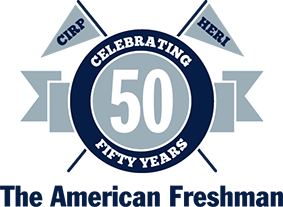- Institutes
- CIRP Surveys
- Infographics
- Publications
- Research
- Accreditation
- Media
- Blog
- About


The primary objective of this project is to assist educators in addressing the needs and advancing the success of a diverse student population who will begin to take leadership in a new vision of society described above. Specifically, the project is guided by four overarching goals:
Figure 1 illustrates the guiding concept map for the project and includes three levels of context, including the larger policy environment, the institutional context, and the classroom setting. All three are intended to produce three types of outcomes that we will focus on through student assessments and pedagogical practices: 1) habits of mind for lifelong learning, 2) values, skills, and knowledge for a multicultural society, and 3) retention and achievement.
The duration of the project will be approximately two years (March 2009 through February 2011). It involves both action and research, context specific work with specific campuses, as well as large scale national work, a training component as well as opportunities for mutual learning to occur between researchers and broad access campuses. The distinct components of the two-year project include:
As part of the initial planning grant we researched and drafted a new instrument designed to assess campus climate, practices, and a set of outcomes focused on citizenship in a multicultural society that can be used in tandem with other assessments on campus. A central feature of the survey is that campuses can get a “pulse” on students surrounding a range of issues by tapping into psychosocial experiences, behaviors, values, self-assessments, and responses to the environment.
In order to get a better handle on the environments, practices, and policies of broad access institutions, the research team will conduct site visits to each campus in conjunction with the appointed campus liaison team. An inventory of campus practices will be compiled, administrators and faculty will be interviewed, and additional focus groups will be conducted. The case studies provide a deeper understanding of the institutional context and allow researchers to understand key challenges and strategies institutions employ in serving a diverse student population and ensuring their success. Feedback will be offered to each campus about their initiatives to engage in mutual problem-solving after each visit.
The Institute will take place each summer to offer workshops in several new techniques designed to get at modeling educational processes (structural equation modeling), assessing the impact of multiple institutions and classrooms (hierarchical linear modeling), as well as new designs to answer the question of whether particular environments or interventions (such as financial aid awards) make a difference for similarly positioned students (race/ethnicity, gender, low-income status).
The National Clearinghouse will provide data matched with 330 institutions that participated in our national surveys (including our new DLE instrument), consisting of low/medium selectivity institutions and community colleges. Our data allow us to identify institutions that have large numbers of low-income, first generation, and underrepresented students. These data will allow us to 1) provide a national backdrop for pilot institutions struggling with the issues of retention, 2) study student mobility patterns since the Clearinghouse data is the only source of information about where students enroll after leaving an institution, and 3) generate prediction equations that institutional researchers can use to estimate their own retention rates to determine the characteristics of students they admit and whether they are above or below expected averages.
The pilot phase of the DLE survey has closed and preparations are being made for the national launch through CIRP.
Information regarding the national launch as well as a preview of the revised core survey and modules are available at www.heri.ucla.edu/dleoverview.php and registration at www.cirpsurveys.org
Hurtado, S., Griffin, K. A., Arellano, L. & Cuellar, M. (2008). Assessing the value of climate assessments: Progress and future directions. Journal of Diversity in Higher Education, 1(4), 204-221.